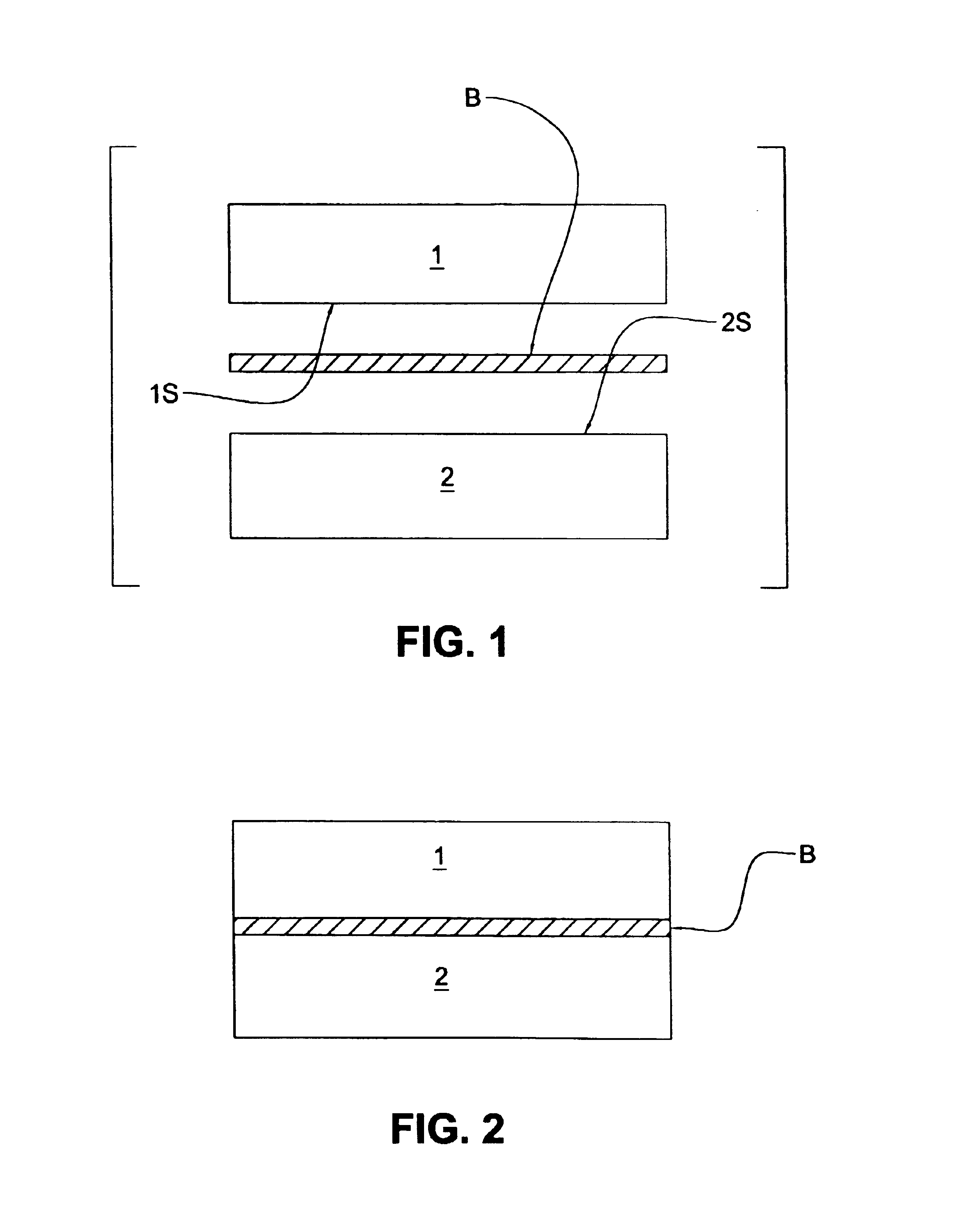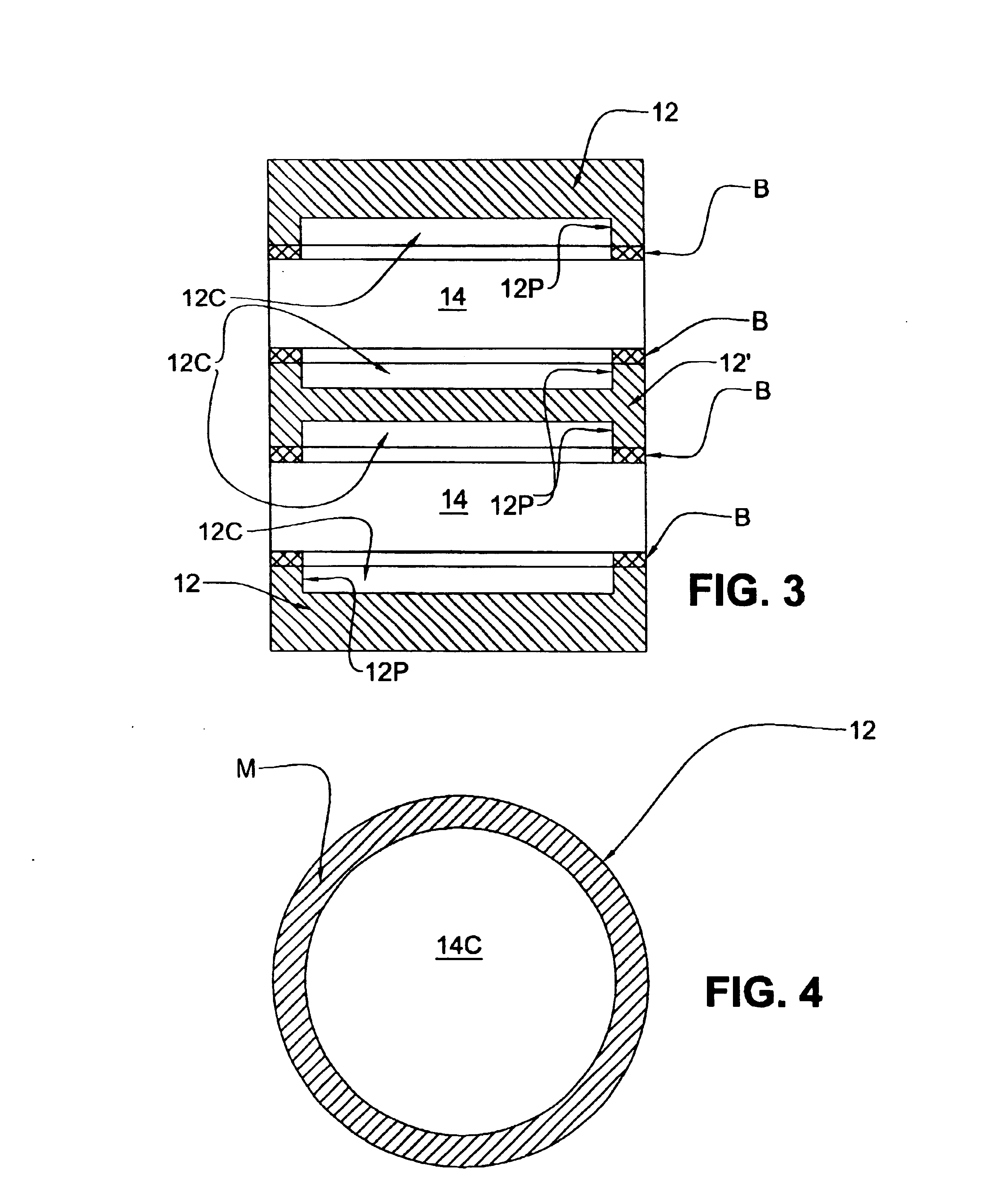Method of joining ceramic or graphite to metal with an alloy having high nickel or cobalt content, alloys for joining the same, and products formed therewith
a technology of ceramic or graphite and alloy, which is applied in the direction of fuel cell details, layered product treatment, machines/engines, etc., can solve the problems of affecting the brazed joint, the alloy does not wet and flow well, and the thermal expansion coefficient between these materials can generate thermal stresses across the join
- Summary
- Abstract
- Description
- Claims
- Application Information
AI Technical Summary
Benefits of technology
Problems solved by technology
Method used
Image
Examples
Embodiment Construction
The present joining method uses alloys or brazing alloys that contain a high weight percentage of nickel or cobalt, and is suitable for high temperature applications, even in an oxidizing environment, such as in fuel cells and turbine engines. Some examples of alloys usable according to the present invention are those designated specifically in Aerospace Material Specifications (AMS), such as AMS4776, AMS4777, AMS4778, AMS4779, AMS4782, and AMS4783, and by the American Welding Society as BNi-6. The nominal composition by weight percent of these brazing alloys are set forth in Table 1 and their brazing temperature ranges in Table 2.
TABLE 1Composition of Brazing Alloys by Weight Percent ELEMENTSALLOYS B C Si P Cr Fe W Co NiAMS47763.00.064.5 14.04.5BalanceMaxAMS47773.10.064.57.03.0BalanceMaxAMS47783.10.064.5BalanceMaxAMS47791.90.063.5BalanceMaxAMS47820.0610.219.0BalanceMaxAMS47830.80.068.019.04.0Balance17.0MaxBNi-60.0611.0BalanceMax
TABLE 2Brazing Temperature Rang...
PUM
| Property | Measurement | Unit |
|---|---|---|
| temperature | aaaaa | aaaaa |
| temperatures | aaaaa | aaaaa |
| temperatures | aaaaa | aaaaa |
Abstract
Description
Claims
Application Information
 Login to View More
Login to View More - R&D
- Intellectual Property
- Life Sciences
- Materials
- Tech Scout
- Unparalleled Data Quality
- Higher Quality Content
- 60% Fewer Hallucinations
Browse by: Latest US Patents, China's latest patents, Technical Efficacy Thesaurus, Application Domain, Technology Topic, Popular Technical Reports.
© 2025 PatSnap. All rights reserved.Legal|Privacy policy|Modern Slavery Act Transparency Statement|Sitemap|About US| Contact US: help@patsnap.com



